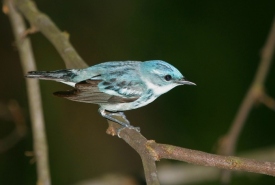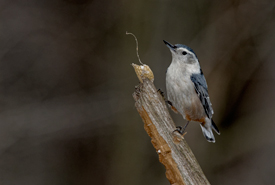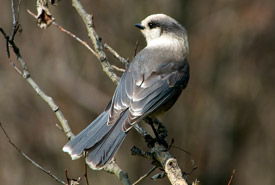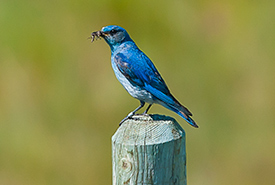How we can save our songbirds

Cerulean warbler (Photo by Bill Hubick)
By now, I'm hoping that many of you have heard about declining songbird populations and the numerous threats that these birds face, which are, typically, physical threats to their survival. However, I’d like to discuss a different type of threat.
Through my time in academia, the public sector and now working for the Nature Conservancy of Canada (NCC), one of the biggest conservation issues I’ve come across is how to make it matter to people that billions of songbirds die each year through easily preventable means, and how to convince people that they should care.

White-breasted nuthatch (Photo by Lorne)
Apathy, I’ve discovered, is likely the largest threat to songbirds. I consider it a bigger threat than cats, window collisions, pesticides, nocturnal lighting, poaching and any other myriad of things that affect songbird survival. People sometimes think that “experts” are dealing with the problem or they are uncertain how they can be part of the solution, but there are many small steps that people can take to help.

Canada jay (Photo by NCC)
I believe it is important to realize that populations are made up of individuals. So, saving one individual bird is a step towards stabilizing or minimizing population declines. In the case of common birds, I am a firm believer in keeping common birds common — that is, saving individuals of common species such as warblers helps maintain their populations at healthy levels.
A recent documentary entitled The Messenger addresses all of the threats I mentioned above, as well as some additional ones; it is very well made and informative about songbird conservation (and I highly recommend you go see it). When I went to the screening in my city, I could recognize a good portion of the people also in attendance through my work in songbird conservation — they were already concerned with songbird conservation and likely aware of the threats mentioned and, I hope, doing their part to mitigate these threats. So, this well-made and impactful movie was, in a large sense, already “preaching to the choir.” But, to effect real change for songbird populations, a broader audience is needed.

Mountain bluebird (Photo by Leta Pezderic/ NCC staff)
To make real change, we need to educate people but also encourage them to act. Education is important and essential, but it is only the first step.
Perhaps you are reading this and it is the first you’ve heard of these things, in which case, think of this as the start of your journey in helping save our songbirds. Or, maybe there’s a good chance you already knew of these concerns. Either way, you can play your part by educating friends, family and co-workers about the threats to songbirds and what we can all do to help them.
Always remember: each of us can make a difference. Learn about all the ways you can help below:
- Keep cats indoors or allow them outside in a way that will reduce their threat to songbirds;
- Modify glass to prevent window collisions;
- Switch to bird-friendly coffee – often labelled as ‘shade grown’. Ethiopian coffee is typically sustainably grown, but may not have this label. Do your research to ensure you're purchasing bird-friendly coffee;
- Participate in citizen science programs that track and monitor birds, such as Project Feederwatch, local atlas projects and The Great Backyard Bird Count;
- Create a bird-friendly yard by planting native plants or plants known to be beneficial for particular bird species, installing and maintaining nest boxes and/or bird baths or providing habitat in other ways.
Editor's note: This posted was edited on February 23, 2017.


